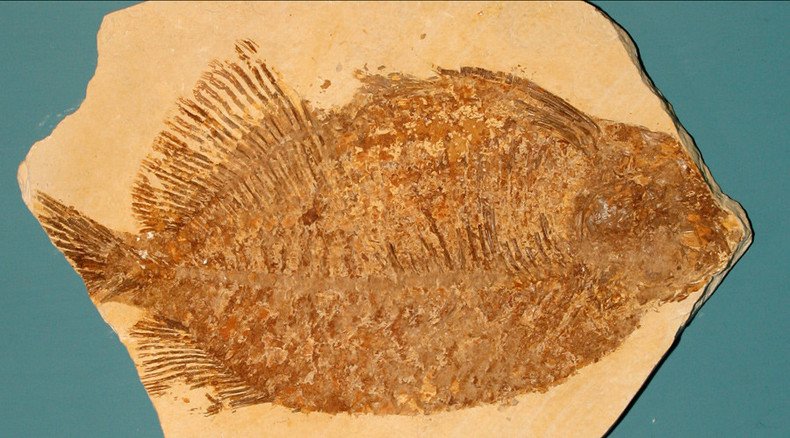'Tarpon from hell': 100mn yo fossils shed light on Australia's ancient fish

Fossils dating back 100 million years have been discovered in Australia, shedding new light on the inhabitants of its ancient inland sea.
Among the findings was the skull of a cooyoo, a giant predator fish. The skull, unearthed last month at a farm near Julia Creek in Queensland, revealed that the fish had much larger teeth than previously thought.
Although prior reconstructions showed the cooyoo's teeth to be short and comb-like, they were actually long and pointed – allowing the predator fish to latch on to slippery prey.
But while the cooyoo's chompers were apparently functional at mealtimes, they didn't help its appearance.
"Cooyoo looked like the tarpon from hell, with a large under-bite giving it an exaggerated cartoonish appearance," Dr. Timothy Holland, the paleontologist who unearthed the cooyoo fossil, told the Australian Broadcasting Corporation. A tarpon is a large saltwater game fish.
Accidental discovery of blood, collagen in dinosaur bones could rewrite textbooks http://t.co/bkIfa4VzZ7pic.twitter.com/nmcBjN2Xj7
— RT America (@RT_America) June 10, 2015But the discovery of the “tarpon from hell” involved more luck than skill, according to Holland.
“I was looking at a spot where there’d been fossils found years before and I was turning over these slabs of mudstone and I guess I just grabbed onto the right one and flipped it over,” he said, as quoted by the Guardian.
The ancient cooyoo is believed to have stretched three meters in length. Its only threats were large marine reptiles and sharks.
For a paleontologist, fossil discoveries are like winning the lottery. But there was more to the jackpot than just the cooyoo skull.
Upon a return to the site to find a missing piece of the skull, Royal Melbourne Institute of Technology student Paul Ter made another “highly unusual” find.
Just 20 meters away from the cooyoo discovery site, Ter spotted the skeletons of small fish preserved inside a clam.
GoPro turtle inspires people to save Great Barrier Reef (VIDEO) http://t.co/g8X4NTpVYfpic.twitter.com/Z6tXhxGTXu
— RT America (@RT_America) July 6, 2015The finding is significant because, according to Holland, scientists “hardly have any small fish preserved from the inland sea.”
“They seem to have all been eaten up by predators or became jumbled up through currents, or scavengers have got to the remains. But it seems like these little fish were somehow protected inside the shell of this clam, which is amazing.”
He added that the fish are the best preserved examples of small fossil fish from Australia's inland sea, which scientists believe covered much of Queensland 100 million years ago, when there were no polar ice caps.
Both fossils went on display this week at the Kronosaurus Korner museum in Richmond, Queensland.













